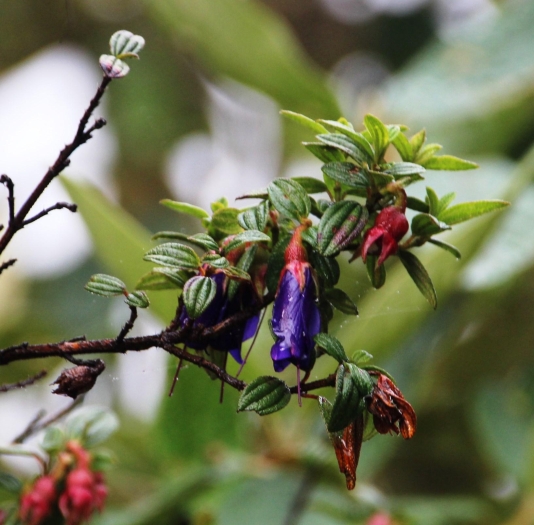Beak Brachyotum
(Brachyotum rostratum)
Beak Brachyotum (Brachyotum rostratum)
/
/

Tony Rebelo
CC BY-SA 4.0
Image By:
Tony Rebelo
Recorded By:
Copyright:
CC BY-SA 4.0
Copyright Notice:
Photo by: Tony Rebelo | License Type: CC BY-SA 4.0 | License URL: http://creativecommons.org/licenses/by-sa/4.0/ | Rights Holder: Tony Rebelo | Publisher: iNaturalist | Date Created: 41907 |



















Estimated Native Range
Summary
Brachyotum rostratum, commonly known as Beak Brachyotum, is a shrub typically found in the understory of montane cloud forests in Central and South America, including regions such as the Andes. It thrives in cool, humid conditions often encountered on damp slopes, cloud forest margins, and along riverbanks. This species usually reaches a height of 2-3 feet (0.6-0.9 meters) and a width of 1.5-2 feet (0.5-0.6 meters). Beak Brachyotum is notable for its elliptical leaves and its pink to purple flowers, which are showy and bloom in the summer, attracting pollinators such as hummingbirds.
The plant is valued in cultivation for its attractive flowers and its ability to adapt to a variety of garden settings, provided it has protection from intense sunlight. It is often used in border plantings, as an understory shrub in woodland gardens, or in containers where its flowering can be appreciated up close. Gardeners should provide Beak Brachyotum with part shade, consistent moisture, and well-draining loamy or clay soils to mimic its native cloud forest habitat. While it is generally low-maintenance, it can be susceptible to root rot if overwatered or planted in poorly draining soils. It is not known to be invasive when grown outside its native range, but as with all non-native plants, care should be taken to monitor its growth and spread.CC BY-SA 4.0
The plant is valued in cultivation for its attractive flowers and its ability to adapt to a variety of garden settings, provided it has protection from intense sunlight. It is often used in border plantings, as an understory shrub in woodland gardens, or in containers where its flowering can be appreciated up close. Gardeners should provide Beak Brachyotum with part shade, consistent moisture, and well-draining loamy or clay soils to mimic its native cloud forest habitat. While it is generally low-maintenance, it can be susceptible to root rot if overwatered or planted in poorly draining soils. It is not known to be invasive when grown outside its native range, but as with all non-native plants, care should be taken to monitor its growth and spread.CC BY-SA 4.0
Plant Description
- Plant Type: Shrub
- Height: 2-3 feet
- Width: 1.5-2 feet
- Growth Rate: Moderate
- Flower Color: Purple
- Flowering Season: Summer
- Leaf Retention: Evergreen
Growth Requirements
- Sun: Part Shade
- Water: Medium
- Drainage: Medium, Fast
Common Uses
Bird Garden, Border Plant, Butterfly Garden, Hummingbird Garden, Low Maintenance, Showy Flowers
Natural Habitat
Montane cloud forests
Other Names
Common Names:
Scientific Names: , Brachyotum rostratum, Brachyotum callosum, Brachyotum microphyllum, Brachyotum seorsum, Brachyotum trianae, Brachyotum trianaei, Chaetogastra microphyllum, Chaetogastra rostrata,
GBIF Accepted Name: